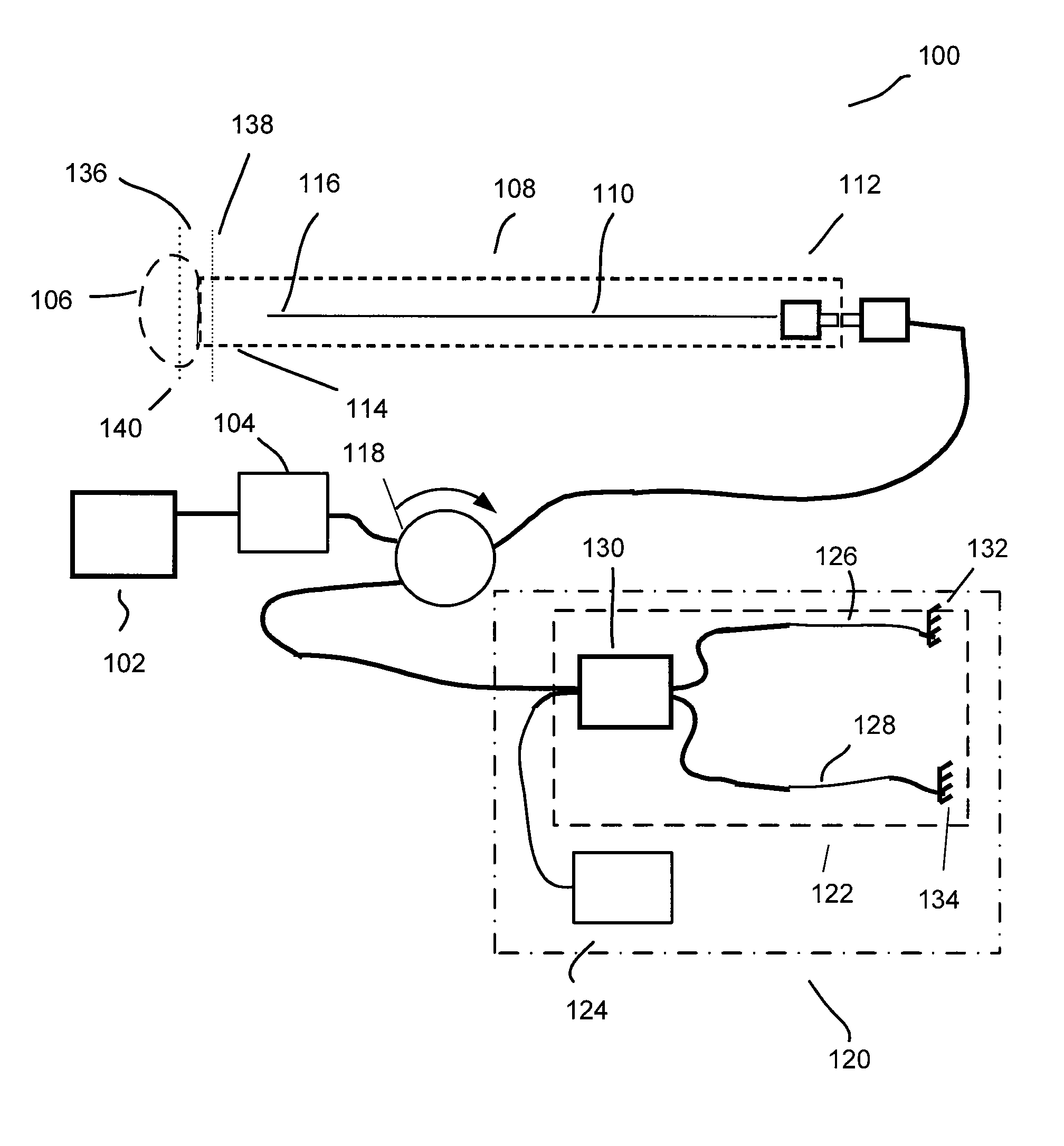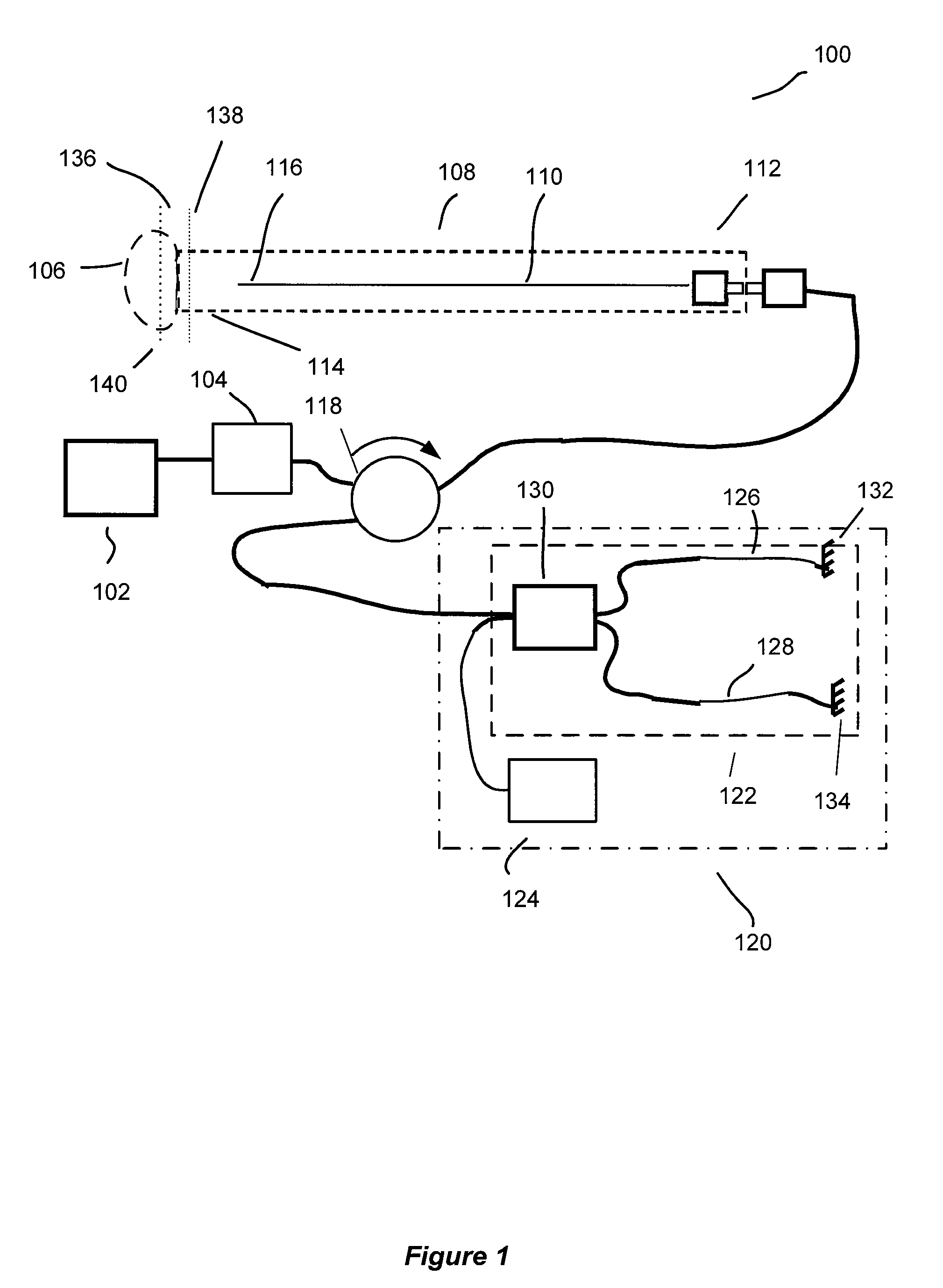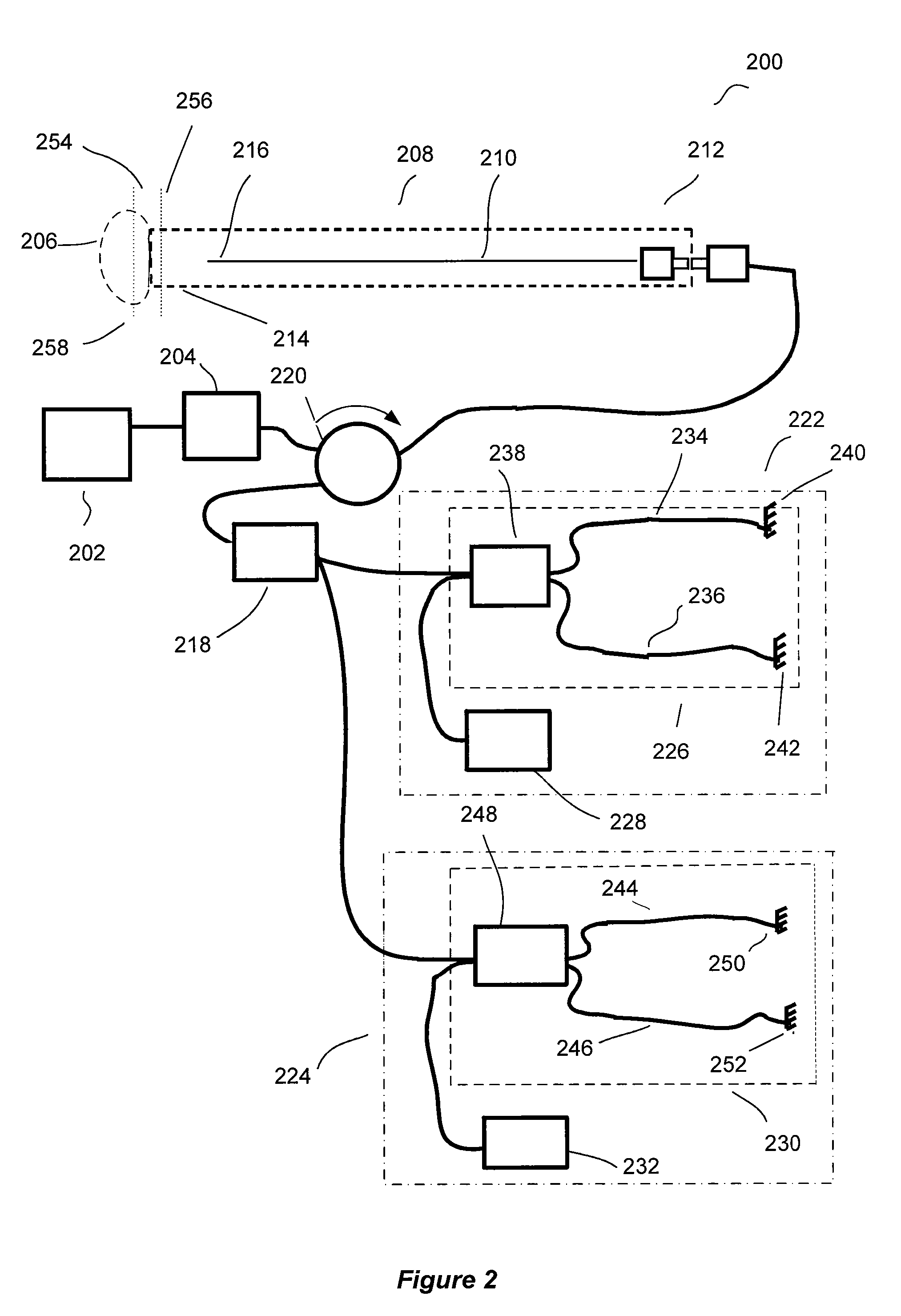Polarization-sensitive common path optical coherence reflectometry/tomography device
a common path and optical coherence reflectometer technology, applied in the field of system and method for visualizing the subsurface region of samples, can solve the problems of difficult or even impossible to obtain reference reflection from the vicinity, and only a point located far from the sample, so as to improve the polarization-sensitive common path ocr/oct
- Summary
- Abstract
- Description
- Claims
- Application Information
AI Technical Summary
Benefits of technology
Problems solved by technology
Method used
Image
Examples
Embodiment Construction
[0043]The subject application is directed to systems and methods for visualizing subsurface regions of samples, and more specifically, to a polarization-sensitive common path optical coherence reflectometer and polarization-sensitive optical coherence tomography device that provide internal depth profiles and depth images of samples. Modifications of the polarization-sensitive common path optical coherence reflectometer are illustrated by means of examples of optical fiber devices being part of an apparatus for optical coherence tomography, although it is evident that they may be implemented with the use of bulk optic elements, and may be used as independent devices. The optical fiber implementation is preferable for use in medical applications, especially in endoscopy, where flexibility of the optical fiber provides convenient access to different tissues and organs, including internal organs via an endoscope.
[0044]Turning now to FIG. 1, there is shown a block diagram of a preferred...
PUM
 Login to View More
Login to View More Abstract
Description
Claims
Application Information
 Login to View More
Login to View More - R&D
- Intellectual Property
- Life Sciences
- Materials
- Tech Scout
- Unparalleled Data Quality
- Higher Quality Content
- 60% Fewer Hallucinations
Browse by: Latest US Patents, China's latest patents, Technical Efficacy Thesaurus, Application Domain, Technology Topic, Popular Technical Reports.
© 2025 PatSnap. All rights reserved.Legal|Privacy policy|Modern Slavery Act Transparency Statement|Sitemap|About US| Contact US: help@patsnap.com



